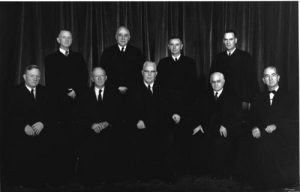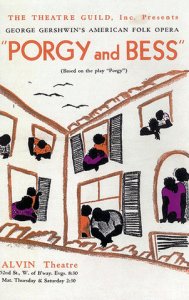What if you found yourself dancing for a purpose much bigger than yourself? Could a dance have the power and the ability to bring back life or rebuild the earth? When people dance for a purpose, others see and listen; but maybe not in the right way. Could the events that occurred at the Battle of Wounded Knee be the cause for such a pivotal moment in history? In this particular case, religion is at the heart of the Sioux Ghost Dance. The power of such a religion is almost unseen in today’s society. Today, when people picture Indians dancing, they picture a massive fire, guns being fired, and many more ritualistic signatures. An extraordinary element of this dance is that it was a religious ceremony, just like taking communion in Church. During this period in history, life was drastically changing for the Sioux Indians. Some of their problems included loss of their land to the whites, scarcity of food, and their freedom being taken away from them. In search of regeneration of the earth and a connection to nature, the Sioux sought to restore things back to earlier times.

The dances that were most important to the Sioux were the Sun Dance and Ghost Dance. The most religious one of the two was the Sun Dance. This was a self-sacrifice ritual with dancing, drums, praying, and self-made cuts to the body. The cuts were made to bring the people closer in prayer and sacrifice for their loved ones. The Ghost Dance was a ritual that led the Battle of Wounded Knee Creek. The purpose of the famous dance was for the earth to restore the earth’s caretakers to their original life of beauty. The Cheyenne, Arapahos, and Kiowas tribes sent emissaries to a man named Wovoka, who said he was the messiah and claimed to be a visionary. This man proclaimed to people that he was shown songs and dances when he had died for some time. He gave the people instructions for the dance.1 Wovoka spoke of the weather and of the future ahead. He also told them to be nonviolent and behave admirably. He changed the tactics of the Indians from war to peace, and he told them that following the orders of the whites would further develop them. The Sioux tribes were influenced by the man and stopped all their warlike ways of life in order to prepare themselves for the happiness to come. The dance was made for peace with the white people; but the Sioux made changes to make it a cleansing ritual for the whites to leave the land. The dance made its mark and made a wave against the white man. 2
The U.S. government broke the Treaty of Fort Laramie and broke up the Great Sioux Reservation of South Dakota into five smaller reservations. The treaty established a relationship between the Sioux, various other tribes inhabiting the Great Plains, and the United States government. The tribes agreed to cease any further violent activity among each other, and the U.S. government would have the ability to develop tracks and roads on their land. They also wanted to break the tribal relationships that were forming during this time. 3 Cavalry had taken Spotted Elk, also known as Big Foot, the chief of the Lakota, to Wounded Knee. The band of Indians had been doing what was asked of them by Wovoka to get the earth back to its full self. On the morning of December 29th, the cavalry tried to collect weapons from the Indians so that no violence would break out. One deaf Lakota warrior refused to give up his rifle. In the scuffle, the firearm had gone off and gun shots filled the morning sky with smoke. Many women and children were killed, making up the majority of the casualties in the massacre.4 Most of the people that participated in the Ghost Dance were not acting out in war-like ways, but despite the purpose of this dance, the government was still very anxious towards the tribes.
The Sioux were such a powerful tribe. They took what was needed and used all that the Great Spirit gave them. These fascinating people were certainly not the “savages” they have been depicted as, but they were people who used all parts of the earth with purpose and meaning. The lives lost at Wounded Knee were a tragedy. This truth of the Ghost Dance and the power of a singular tribe had the influence to show others throughout history that unity can be positive during hard times. The coming together of a people for a spiritual way of life can be meaningful for all that are surrounded by such a force.
- James Mooney, “Ghost Dance – The Messiah Letter from Wovoka,” accessed August 31, 2016, http://www.ghostdance.us/history/history-messiahletter.html. ↵
- Matthew A. Taylor, “‘Contagious Emotions’ and the Ghost Dance Religion: Mooney’s Science, Black Elk’s Fever,” ELH 81, no. 3 (2014): 1055–82. ↵
- Wikipedia contributors, “Ghost Dance,” Wikipedia, The Free Encyclopedia, https://en.wikipedia.org/w/index.php?title=Ghost_Dance&oldid=737020849;33 (accessed September 8, 2016). ↵
- Gregory Michno, “The Indian Trail of Broken Treaties,” Wild West 19, no. 2 (August 2006): 38. ↵



44 comments
Erik Rodriguez
Awesome article! It’s very interesting to know they cut themselves to get closer to prayer. I couldn’t imagine having to cut myself like that! However, it’s amazing to see the significance that dancing has been able to portray over the centuries on this Earth. It’s truly something special.
Great article!
Aaron Jaramillo
Well done on this article! It was very informative and interesting. I’ve heard about the rain dance before but never the sun dance or the ghost dance. It’s cool how one would make self cuts to stay close to family.
Aaro Jaramillo
Well done on this article! It was very informative and interesting. I’ve heard about the rain dance before but never the sun dance or the ghost dance. It’s cool how one would make self cuts to stay close to family.
Jacob Hall
I love how you portrayed the view of the Sioux. Often in historical texts, even today, Native Americans are depicted as savages that did not seek to adopt the ways of the white man. But that’s not the case, in fact many were very accepting of there ways. My family is Cherokee, and they always would tell me how the books got it wrong, they told me that they didn’t fight the white man, but rather sought to embrace him. So its nice to see someone conveying the truth.
Maalik Stansbury
Hmmm. I didn’t know that what the dances were called for their culture. It express a lot of who they are through the way they dance. This article was very educational and made me learn more about this culture and as to what they do and why they do these certain presentations.
Mariana Sandoval
It’s interesting to see that throughout history religion has played a key role in the subordination of many indigenous population to white settlers. You stated that the Native Americans were told to be nonviolent and to follow the orders of the white settlers as it would further develop their people. This was the same kind of mentality that led to the colonization of indigenous groups like the Aztecs and the Taino Indians (as mentioned by another student’s article about Christopher Columbus and the colonization of Puerto Rico).
I do think that the Ghost Dance has a very beautiful meaning especially since nonviolence is always better than violence but it is very sad that many of the Sioux people were massacred that day.
Jezel Luna
It amazes me the impact that dancing can bring into someone’s life. I always wondered what spiritual dances true meaning was and their purpose. It’s was interesting how they would cut their bodies to bring them closer in prayer. Their dance towards the white man seemed very inspirational and humble. Great job of the description of the two dancing rituals.
Jorge Manzanares
I enjoyed your article about one of the indigenous people of America. Well done on drawing parallel to the Sioux religion and Christianity. More often than not, if something does not appear European or Westerner it is seem as barbaric. The Sioux, as well as other indigenous tribes, were seen as savages. However, they had many things in common than the colonizers thought. Well done on illustrating the Sioux perspective!
Rachel White
To think that dancing wasn’t always twerking in the club! I enjoyed the idea of dancing for meaning, although maybe not for relying on food or peace in war. It is sad to think that we destroyed a community because we thought they were savages. We should have learned from them, appreciate the Earth and not destroy it like we do in today’s society. Interesting (and sad) topic!
Diana Moreno-Gutierrez
It seems that government intervention in Indian ways never turns out well, especially in the massacre that was mentioned. It’s sad that an act with the good intention of reducing violence actually caused the death of many women and children. I was however astonished by the fact that the Indian’s were completely immersed in their faith and had a variety of dancing rituals which by what I see, was taken very seriously. It was a great article with a good description of the two types of dancing rituals that were celebrated.